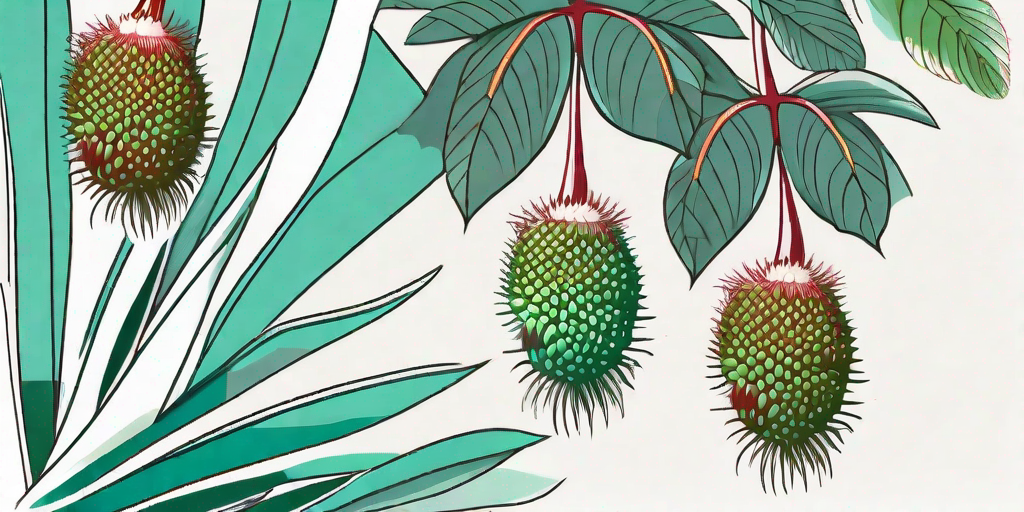
Welcome to the wonderful world of rambutan farming! If you're a fan of exotic fruits and have a green thumb itching for a new challenge, then you're in the right place. We're about to embark on a journey from seed to sweetness, exploring the ins and outs of growing and harvesting the deliciously sweet and slightly hairy rambutan fruit. So, grab your gardening gloves, and let's get started!
Understanding the Rambutan Tree
Before we delve into the nitty-gritty of rambutan cultivation, let's take a moment to appreciate the tree that bears this unique fruit. Native to Southeast Asia, the rambutan tree (Nephelium lappaceum) is a member of the Sapindaceae family. It's a tropical tree, which means it loves warmth and humidity, and it's not a fan of frosty mornings or dry climates.
The rambutan tree is an evergreen, reaching heights of 12 to 20 meters. It's adorned with pinnate leaves and produces small, fragrant flowers that eventually give way to the fruit we're all here for. But don't be fooled by its humble appearance. This tree is a powerhouse, capable of producing up to 6,000 fruits per year!
The Rambutan Fruit
Now, let's talk about the star of the show: the rambutan fruit. Imagine a lychee wearing a punk rock wig, and you've got a rambutan. The fruit is round to oval and covered in soft, hair-like spines. The skin is typically red or yellow, while the flesh inside is translucent, juicy, and sweet. And let's not forget the seed in the middle, which is your golden ticket to growing your own rambutan tree.
How to Grow a Rambutan Tree
Now that we've got the introductions out of the way, it's time to roll up our sleeves and get our hands dirty. Growing a rambutan tree from seed is a labor of love, but with patience and care, you can reap the sweet rewards.
Step 1: Getting the Seed
The first step in your rambutan journey is to get your hands on a seed. The best way to do this is to buy a fresh rambutan fruit and extract the seed yourself. This way, you know the seed is fresh and ready to grow. Just remember, rambutan seeds lose their viability quickly, so it's best to plant them as soon as possible after extraction.
Step 2: Preparing the Seed
Once you have your seed, it's time to prepare it for planting. First, remove any remaining fruit flesh from the seed, as this can lead to fungal problems. Then, soak the seed in lukewarm water for a day to help jumpstart the germination process.
Step 3: Planting the Seed
Now comes the exciting part: planting the seed. Fill a pot with well-draining soil, make a small hole about twice the size of the seed, and place the seed inside. Cover it with soil, water it well, and place the pot in a warm, sunny spot. With proper care, your seed should sprout in about 10 to 21 days.
Caring for Your Rambutan Tree
Once your rambutan seedling has sprouted, the real work begins. Rambutan trees require regular care to thrive, including watering, fertilizing, and pruning.
Watering
Rambutan trees love water, but they don't like to sit in it. To keep your tree happy, water it regularly but make sure the soil drains well. A good rule of thumb is to let the top inch of soil dry out before watering again.
Fertilizing
Like any fruit tree, rambutan trees need nutrients to produce those sweet, juicy fruits. A balanced fertilizer applied every few months should do the trick. Just remember, too much of a good thing can be harmful, so don't overdo it with the fertilizer.
Pruning
Pruning is essential for maintaining the health and productivity of your rambutan tree. Regular pruning helps to shape the tree, improve air circulation, and encourage better fruit production. Just remember to always use clean, sharp tools to avoid spreading disease.
Harvesting Your Rambutan Fruit
After all your hard work, the moment of truth finally arrives: harvest time. Rambutan fruits are typically ready to harvest about 90 days after flowering. The fruit should be fully colored, and the spines should be stiff and upright. To harvest, simply cut the fruit from the tree with a sharp knife or scissors.
Frequently Asked Questions
How long does it take for a rambutan tree to bear fruit?
Patience is key when growing rambutan trees. From seed, a rambutan tree typically takes about 5 to 6 years to start bearing fruit. But trust us, the wait is worth it!
Can I grow a rambutan tree indoors?
Yes, you can grow a rambutan tree indoors, provided you have enough space and light. Just remember, rambutan trees can get quite large, so you may need to prune it regularly to keep it manageable.
Can I grow a rambutan tree in a cold climate?
Rambutan trees are tropical plants, so they don't do well in cold climates. However, if you're determined to grow a rambutan tree in a colder region, you can try growing it in a greenhouse or indoors with plenty of light.
Final Thoughts
And there you have it, folks! A comprehensive guide to growing and harvesting rambutan fruit. It may seem like a daunting task, but with patience, care, and a little bit of humor, you can turn a tiny seed into a towering tree laden with sweet, juicy fruits. So, what are you waiting for? Get out there and start your rambutan adventure today!











